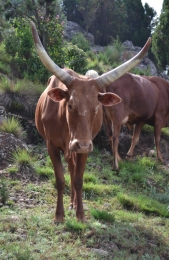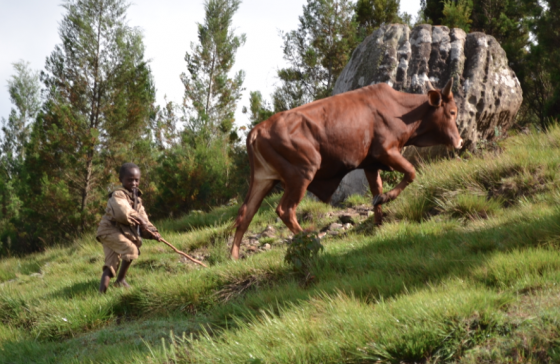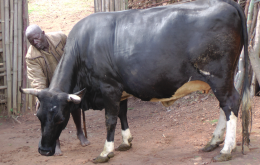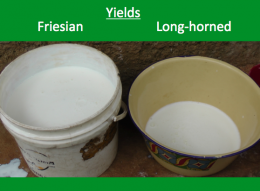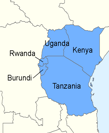 Useless cows
Useless cows
In Burundi it is widely seen that the number of cattle a family owns brings prestige and status. The reality is very different; they foster poverty. Evariste Ndayirukiye, who had previously worked with Donna Bloomfield in the Kings School, had analysed the situation in his home village and had come to the conclusion that the popular long horned cow was useless! Not only did it give a very low milk yield but it overgrazed the land, leading to degradation and erosion, and was the cause of many children missing school as they followed the herd into the hills.
The solution was both simple and revolutionary.
A revolutionary idea
To impact the community Evariste started what would be called a Social Enterprise in more developed countries. By importing Friesian cows ‘in calf’ from Tanzania he started to develop a change of attitude. Initial ridicule in the community turned to desire to own such cattle themselves as people saw how Evariste was able to achieve yields of 10-15 litres of nutritious milk per day from each animal. This has led both to employment for many people and an improvement in diet among those on the lowest incomes, particularly the slum dwellers in Bujumbura.
New attitudes
This change of attitude is already producing benefits as children are released to go to school, the diet is improving and people are getting their feet on the first rung of the employment ladder, thus generating income for the family. How has he achieved this in only five years?
Productive cows
When the first two cows arrived and milk began to be produced the local people observed with amazement: 15 litres per cow compared to about 1-2 litres from their traditional animals.
He kept the cows in pens, with occasional outside grazing, and fed them on elephant grass which members of the community grew for the purpose.  They were able to sell this to him and, in due course, to other owners, another source of income for the community. There are now nearly 100 Friesians in that community; most have been purchased but some have been born there.
They were able to sell this to him and, in due course, to other owners, another source of income for the community. There are now nearly 100 Friesians in that community; most have been purchased but some have been born there.
Purchases of these cows are made on behalf of the community by Evariste using a fund set up by a donor. The farmers repay the purchase price through their milk sales, thus allowing the fund to be recycled.
Transport
Currently 450 litres of milk are being gathered daily at 3 collecting centres. The milk is measured and recorded against the farmer’s name who is paid monthly. It is also quality checked before being poured into 22-litre  containers ready for transport. But there is no ‘milk lorry’ here. A team of fit young men with bicycles load at least two containers (sometimes three or even four), each weighing 23kg (which equates to the max baggage allowance of a single case on a flight), onto their bicycles which they push over very rough roads up and down the valleys to the waiting car 11km away. This then takes the milk to the city. The cyclists’ pay? 40 pence (GB sterling) per container, and this is seen as generous. And so another group of people are gaining employment.
containers ready for transport. But there is no ‘milk lorry’ here. A team of fit young men with bicycles load at least two containers (sometimes three or even four), each weighing 23kg (which equates to the max baggage allowance of a single case on a flight), onto their bicycles which they push over very rough roads up and down the valleys to the waiting car 11km away. This then takes the milk to the city. The cyclists’ pay? 40 pence (GB sterling) per container, and this is seen as generous. And so another group of people are gaining employment.
What happens when the milk reaches the city? I will tell you about that next time.

